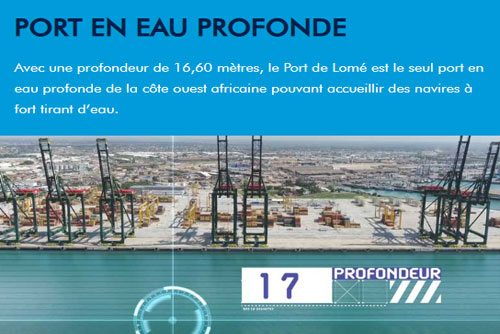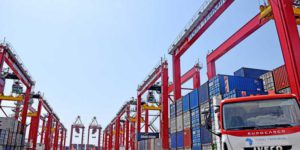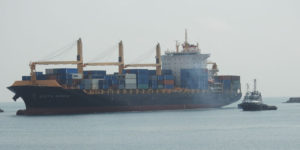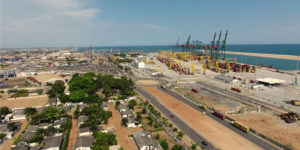

The Autonomous Port of Lome (PAL) has experienced these last ten (10) years, a gradual transformation of its infrastructure, which today appears as the most modern in the West African sub-region and is among the best at the continental level. This performance is the result of a strong political will, which has combined discretion and efficiency in its strategy of attracting capital through Public / Private Partnerships.
Main port of trade of the country with the outside, the Autonomous Port of Lome (PAL) is at the service of the national economy and that of the West African subregion since 1967, year of its commissioning.
PORT OF LOME : A STRATEGIC POSITION
Located at 06 ° 08 N and 01 ° 17 E, the Port of Lomé is the only port on the West African coast through which one can reach several capitals in one day. The Port of Lome offers the advantage of transporting goods at very competitive times and costs.


Thanks to the free port status enjoyed by the Port of Lomé, the handling and transfer of goods in the port area takes place without customs constraints, thus saving time in the processing of ships and goods.
The Port of Lomé is home to a large industrial free zone where industrial production units are located.

The Port basin is delimited by two dikes 950 m and 1720 m long that protect it from silting. In addition, Lomé has a low tidal range (1.20 m) and moderate winds. These conditions allow access to the Port 24 hours a day for any type of ship.

A GREAT PORT AREA

OPTIMAL SAFETY
In order to comply with the safety standards recommended by the International Code for the Safety of Ships and Port Facilities (ISPS Code), the Port Authority of Lome has implemented new security measures, including the installation of a remote monitoring system of the port facilities and a port security corps which has thus ensured optimal security on all goods.

RELAY INFRASTRUCTURE

RAPIDITY OF FORMALITIES
One of the assets of the Autonomous Port of Lome is the speed of the administrative formalities which is the result of the efforts of simplification of the circuits of removal of the goods.
